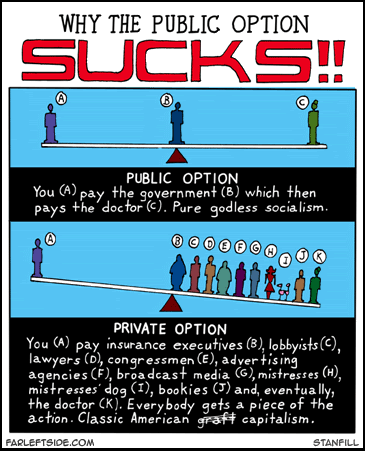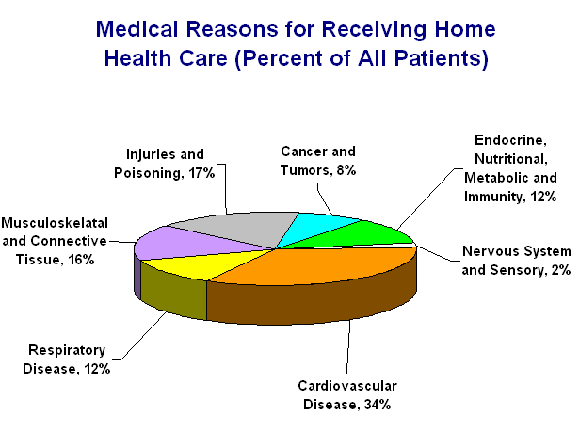The world of the independently insured has actually been a huge black box, however about 60% of the country gets their coverage from private insurers and they are under 65. Part of this work has been asking to what degree our understanding of health spending borne from the analysis of the Medicare population is generalizable to the privately insured.
We found the connection in between costs for the 2 populations has to do with 14%. That is extremely, very low. A lot of the places that we've been utilizing as designs for the country, based upon their low costs for the Medicare population, are high spending for the independently guaranteed. It's exceptionally crucial to understand why costs on Medicare and the privately guaranteed are different.
For the privately insured, cost explains most of health spending variation. Medicare costs are set by the federal government. On the personal side, each hospital participates in a negotiation with each insurance company. These private costs are a function of settlement between 2 celebrations. Costs is a function of cost times amount.
They are most likely to do an MRI. They are more likely to hospitalize for specific conditions. They are most likely to put patients in an ICU.On the private side, amounts differ simply as they do on the public side, however http://remingtonqdnn269.bearsfanteamshop.com/top-guidelines-of-when-is-the-senate-vote-on-health-care prices vary as wellthey're not set by a regulator.
This tells us that the opportunities to target healthcare spending probably vary for the Medicare population and the independently guaranteed. For Medicare, the goal should be to reduce excess quantity. On the private side, we don't desire to see excess care, however we truly have to target price. how does electronic health records improve patient care. We looked at 7 various treatments and discovered that prices differ enormously throughout the U.S.
Across the nation, the price of a knee replacement can vary by approximately an element of 17the most expensive medical facility is 17 times as costly as the least pricey medical facility. Within geographic areas, that can be, for knee replacements, as much as an element of eight. Lower-limb MRIs, when you set aside the reading of the MRI, don't have much quality variation, yet, as an example, the most costly hospital in Miami is charging 9 times as much for an MRI as the most affordable supplier.
What Does When Is The Senate Vote On Health Care Mean?
We found a really little relationship in between health centers' quality and their costs. There is a negative return to being low quality. The worst-performing quartile on quality ratings have prices about 3% lower than an average-quality medical facility. At the other end, health centers ranked extremely by U.S. News and World Report have to do with 13% more expensive than other hospitals.

The element that explains most of the variation is hospital market power. Why are some hospitals able to charge 17 times more than other health centers? Why can one service provider charge 9 times what another does within a city for the specific same thing? Because the markets are not operating effectively.
Monopoly healthcare facilities can extract higher rates when it concerns settlements with private insurers. If you are the only service provider in the area, you have the possibility to get much, much higher prices than if you were dealing with meaningful competition. The advantage is still there in duopoly or triopoly markets.
We've Alcohol Rehab Facility got to look at these mergers with a lot more scrutiny. We have actually got to look a lot more carefully at how health care service providers price their services and how that impacts individual households and the wider economy. We found, consistent with the broader literature, that not-for-profits behave identically to for-profits.
Considered that nonprofit healthcare facilities get $30 billion annually in aids in the form of tax exemption, I think we need to ask tough concerns about whether or not we need to be giving not-for-profit status to these big healthcare facilities. It's an excellent concern, and we don't understand. My instinct is that it goes to the leadership of these medical facilities in the kind of greater pay and it gets reinvested into the center, a few of which goes to much better patient care, a few of which approaches shinier structures and fancier technology with uncertain benefits for clients.
This study tells us that insurance coverage premiums are so high because healthcare company costs are exceptionally high. The way to control the expense of healthcare services is by targeting the huge variation in service providers' rates. We can do that by making rates more transparent, making these markets more vibrant, and actually blunting the monopoly power that a great deal of big doctor have, which has actually allowed them to raise rates.
Our What Is A Single Payer Health Care Statements
Right now, for a health center to make money by Medicare it needs to report quality data. I think healthcare facilities must likewise be required to report their rates. And critically, we require antitrust enforcement. We have to stop a few of the amazing mergers that have actually been accompanying rapidly increasing frequency over the last 10 to 15 years (what does cms stand for in health care).
Healthcare is one of the most heavily lobbied markets in America - how many health care workers have died from covid. The medical facility industry itself is 8% of GDP, so there would be a great deal of pushback. However when we compare the pushback to the discomfort that high health care costs are causing on all of us, the inspiration for action is quite clear.
7 trillion industry that's rife with inadequacy leaves remarkable space for innovators to come in and disrupt the status quo. We are beginning to see business do that. Because service pays a part of the insurance premiums for millions of workers, CEOs know that health care expenses are a huge strain.

Some companies are doing a fantastic job seeking innovative ways to minimize health care expenses. I know of one firm that's really paying patients to pick a lower-price MRI. It's the same quality. The patient is paid $500. The business still pays less overall. Everybody wins. Or, if I'm an employee in a Chicago workplace, maybe my business will enable me to fly to the Mayo Center or to MD Anderson in Texas where, possibly, I can get care that is both less expensive and higher quality than I can get locally.
Increasing clients' level of sensitivity to price and quality and their determination to take a trip additional to get better and lower cost care might have an impact. But today, we have a very here complicated market with practically no information. The federal government has the most power to impact change. The U.S. is an outlier because it is one of the only countries where healthcare rates are market determined.
Among the difficult questions in health care is whether the methods that health care differs from conventional markets allow costs to be set through settlement. I believe the jury is still out. Eventually, if making these markets more transparent and increasing competitors does not check price, then we need to think of whether health care is so various from other sectors of the economy that it needs something like rate policy.